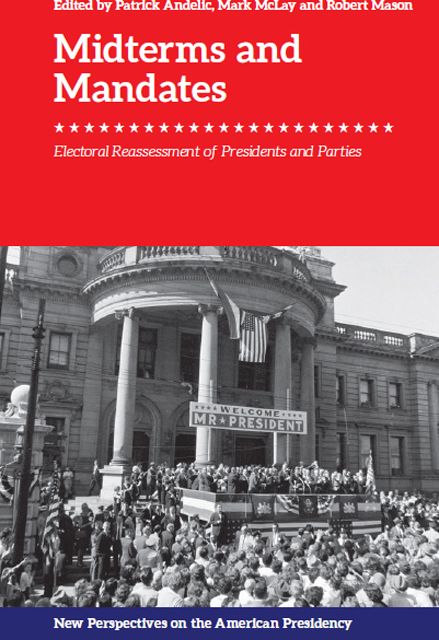Book contents
- Frontmatter
- Contents
- List of Figures and Tables
- Acknowledgements
- Notes on Contributors
- Preface: Why Midterms Matter
- Introduction: Midterms and Mandates, Presidents and Parties
- Part One Midterm Elections in Institutional Context
- Part Two Testing the New Deal Coalition
- Part Three The Republican Resurgence
- Index
9 - ‘The power of their votes’: Richard Nixon, the Silent Majority, and the 1970 Midterm Elections
Published online by Cambridge University Press: 07 June 2023
- Frontmatter
- Contents
- List of Figures and Tables
- Acknowledgements
- Notes on Contributors
- Preface: Why Midterms Matter
- Introduction: Midterms and Mandates, Presidents and Parties
- Part One Midterm Elections in Institutional Context
- Part Two Testing the New Deal Coalition
- Part Three The Republican Resurgence
- Index
Summary
‘Remember, the four-letter word that is most powerful of all the four letters in the world is vote – v-o-t-e,’ thundered President Richard Nixon. It was a blustery October day in the final weeks of the 1970 congressional campaign, and he had just arrived in Grand Forks, North Dakota, hoping to mobilise those gathered on the airport runway to support Republican candidates. With Air Force One behind him and flags and bunting whipping in the wind, the president argued that the Silent Majority – to which many there presumably felt they belonged – was best served by electing candidates who would support the president in Washington, DC. As the crowd listened and the wind buffeted their signs, Nixon stressed that he was not in Grand Forks for partisan reasons, but rather that he was there ‘in behalf [sic] of the United States of America’. Reiterating a common refrain, the president reminded his listeners: ‘It’s time for the great silent majority of this country to stand up and be counted.’ And, confident that this crowd, at least, agreed, a smiling and relaxed Nixon waded into the cheering crowd shaking hands with his supporters.
Similar scenes took place in Columbus, Ohio; Ocean Grove, New Jersey; Kansas City, Missouri; Albuquerque, New Mexico; and many other cities and towns across the United States in the weeks before US voters went to the polls on 2 November 1970. Having faced a Democratic Congress for his first two years in office, Nixon hoped to regain Republican control – or at least to weaken Democratic power – in the 1970 midterm elections. To this end, Nixon and his aides worked to rally the so-called ‘Silent Majority’ behind the president’s favoured candidates. Initially an attempt to rally supporters against the anti–Vietnam War movement, the Silent Majority idea made public participation in political events both socially and politically acceptable for many citizens who associated demonstrations and protests with the anti-war and civil rights movements. Their visible support, in turn, enabled Nixon to claim to speak for the majority of Americans against a noisy minority protesting in the streets.
- Type
- Chapter
- Information
- Midterms and MandatesElectoral Reassessment of Presidents and Parties, pp. 214 - 234Publisher: Edinburgh University PressPrint publication year: 2022



